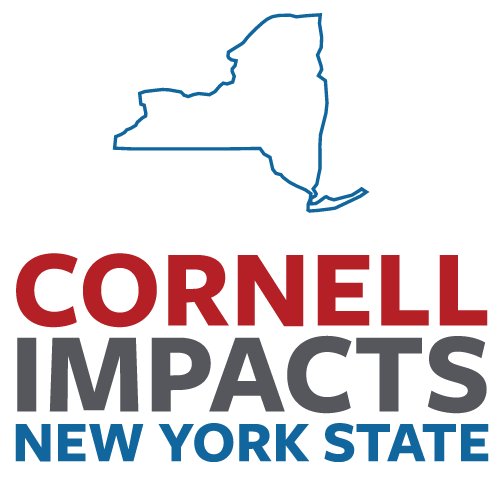An interactive mapping tool developed by ILR School researchers enables policymakers and the public to see how billions in reduced federal funding are impacting jobs and spending in each New York county - and to track how those trends shift over time.
Analysis by the ILR Buffalo Co-Lab shows that in the fiscal year that ended Sept. 30, federal funding to the Empire State decreased by nearly $16 billion compared to the prior fiscal year. Between last December and March, the state shed nearly 121,000 jobs, including 1,600 federal jobs.
Outside New York City, where New York and Queens counties led statewide job losses in that timeframe, the counties hit hardest were Suffolk, Erie, Nassau and Westchester, followed by Onondaga, Monroe, Orange and Albany.
"Preliminary results are sobering," said Cathy Creighton, director of the Co-Lab, during a livestreamed event launching the initiative on Oct. 28 at Buffalo State University. "It shows a loss of billions of dollars in federal funding to New York state via losses to grant funding, contract funding and job losses."
Russell Weaver, the co-lab's director of research, introduced the "NYS Federal Impact Interactive Map," which was developed with support from the state and the Community Foundation of Greater Buffalo, and will be updated as new federal data becomes available. The effort aims to help New Yorkers track the impact of sweeping economic policy changes enacted since January by the Trump administration and intended to promote efficiency and growth, including tariffs, federal budget cuts and layoffs, and tax cuts and deregulation.
"The dashboard functions somewhat like an early detection system for identifying growth, contraction and/or stability in jobs as the new federal economic agenda continues to take shape," Weaver said.
The drop in federal funding as of early this year includes $8.2 billion less in contract spending compared to FY 2024. Minority-owned business enterprises were disproportionately impacted, receiving nearly $500 million less in federal obligations in FY 2025, the analysis found. Federal contracts awarded to construction projects that use labor standards, such as prevailing wage or local hiring provisions, fell by almost $1.5 billion.
Meanwhile, federal grants and assistance dropped by $7.6 billion compared to FY 2024, according to the analysis. That total includes reductions of roughly $2.3 billion to nonprofit organizations and $535 million to public and private institutions of higher education. Weaver said some experts expect cuts to be felt more deeply in the 2026 and 2027 budget years, potentially putting pressure on state and local budgets to fill gaps.
"This is just an indicator of where things might be heading in terms of what is being funded or not funded at the federal level in New York state," Weaver said.
According to the map, the biggest cuts in federal contract spending occurred in Tioga, Onondaga and Monroe counties. Albany County recorded the largest percentage drop (37%) in federal grants and assistance.
Regarding job losses, Weaver said private sector declines were concentrated in tourism and tariff-exposed industries, especially the accommodation and food services, retail trade, transportation and warehousing, and wholesale trade sectors. Many of the lost federal government jobs were likely due to layoffs, he said, and were accompanied by the loss of roughly 460 state government jobs.
The interactive map can be searched by county, region and congressional district. In the eight-county region of western New York where the mapping tool was unveiled, federal government jobs accounted for more than 100 of roughly 10,000 jobs lost as of March 2025. According to the Partnership for the Public Good, a Buffalo-based community think tank, surveyed member organizations reported $35.6 million in federal funding cuts and program eliminations, resulting in layoffs, furloughs and reductions or cancellations of community programs across western New York.
"If these recent changes offer early signals of what is to come from the federal government's efficiency and domestic economic growth agenda," Weaver said, "then New Yorkers - residents, businesses, state and local governments, nonprofits and communities - are likely to face meaningful adjustment costs as federal austerity measures permeate throughout the state."







